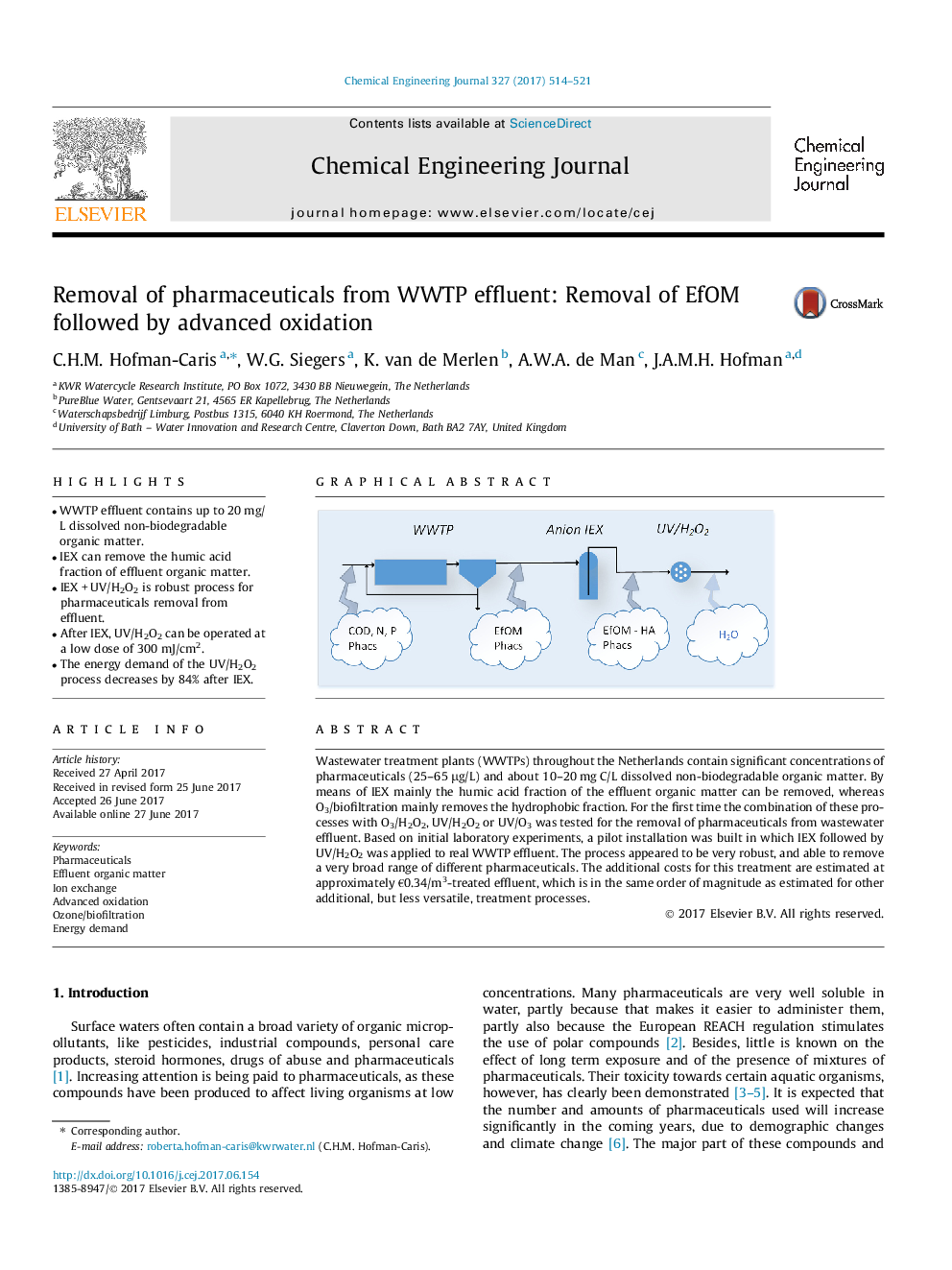| Article ID | Journal | Published Year | Pages | File Type |
|---|---|---|---|---|
| 6465048 | Chemical Engineering Journal | 2017 | 8 Pages |
â¢WWTP effluent contains up to 20 mg/L dissolved non-biodegradable organic matter.â¢IEX can remove the humic acid fraction of effluent organic matter.â¢IEX + UV/H2O2 is robust process for pharmaceuticals removal from effluent.â¢After IEX, UV/H2O2 can be operated at a low dose of 300 mJ/cm2.â¢The energy demand of the UV/H2O2 process decreases by 84% after IEX.
Wastewater treatment plants (WWTPs) throughout the Netherlands contain significant concentrations of pharmaceuticals (25-65 μg/L) and about 10-20 mg C/L dissolved non-biodegradable organic matter. By means of IEX mainly the humic acid fraction of the effluent organic matter can be removed, whereas O3/biofiltration mainly removes the hydrophobic fraction. For the first time the combination of these processes with O3/H2O2, UV/H2O2 or UV/O3 was tested for the removal of pharmaceuticals from wastewater effluent. Based on initial laboratory experiments, a pilot installation was built in which IEX followed by UV/H2O2 was applied to real WWTP effluent. The process appeared to be very robust, and able to remove a very broad range of different pharmaceuticals. The additional costs for this treatment are estimated at approximately â¬0.34/m3-treated effluent, which is in the same order of magnitude as estimated for other additional, but less versatile, treatment processes.
Graphical abstractDownload high-res image (62KB)Download full-size image
